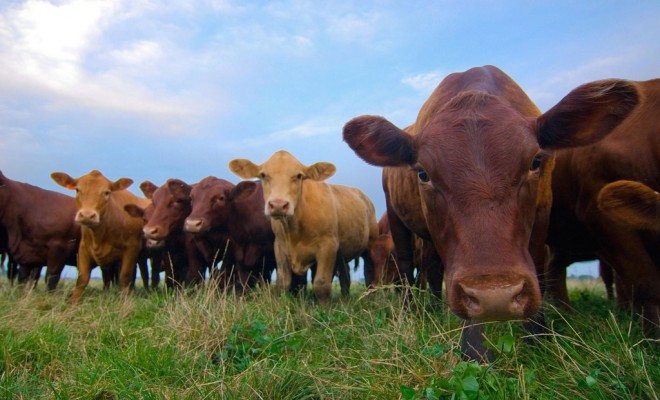 Image courtesy of [Global Panorama/U.S. Department of Agriculture via Flickr]
Image courtesy of [Global Panorama/U.S. Department of Agriculture via Flickr]
Energy and Environment
The Challenges of Food Production and Consumption
Rising populations and increasingly heavy use of technology is causing a global food crisis. But starvation isn’t the issue at hand; it is waste. The amount of food that is wasted worldwide costs a huge amount of money, fills landfills, and emits methane gas. The process of producing and delivering food in the first place induces environmental damage and displaces people and animals. This complex and interconnected system requires attention on multiple levels if we intend to avert a slew of catastrophes.
Similar to the problems with water, the primary problem with managing and consuming food is not scarcity but distribution imbalances. People starve in many places around the world, while others gorge themselves on conspicuously lavish meals that they do not intend to finish. In fact, the Food and Agriculture Organization of the United Nations estimated that the food discarded by retailers and consumers in the most developed counties would be more than enough to feed all of the world’s 870 million hungry people. Some suggest that the economic ramifications of wasted food reach into the hundreds of billions of dollars. An additional scientific conclusion includes the fact that the amount of methane gas emitted by decomposing food in landfills is only surpassed by national emissions of the United States and China.

Courtesy of Bill McChesney via Flickr.
Considering these ominous statistics, some say a solution is to refrain from eating meat. The meat industry requires large swaths of land to raise animals, huge amounts of food to feed to them, and enormous quantities of water to grow those crops in the first place. This resource and energy intensive process thus draws in many sectors in order to be possible. While this decision may help reduce demand for such environmentally threatening foods, there are many other products that we eat whose production is costly. For example, one of the most common ingredients in many foods, especially packaged and frozen ones, is palm oil. The price for the acquisition of the substance includes heavy deforestation in Indonesia and Malaysia, which displaces indigenous people, releases stored carbon into the atmosphere, and threatens already critically endangered animals such as Sumatran rhinos and orangutans, Asian elephants, and leopards.

Courtesy of David Ellis via Flickr.
The overall production and distribution processes of the industry is one of the primary concerns at play. Thanks in part to Rachel Carson’s Silent Spring, one of the sparks of the environmental movement in the 60s, we are quite familiar with all the problems associated with spraying chemicals, pesticides, and DDT. It has already been established that pesticides and deforestation are endangering butterflies; however, they are still widely used in the agricultural sector. A relatively recent possible solution involved genetically modified crop seeds, which provide the subsequent plants with an incorporated pesticide that attacks the nervous system of pests such as root worms and flea beetles. It is becoming evident that these plants are dangerous to other types of insects as well, particularly bees. This could be catastrophic. All mosquitoes do is spread diseases; the world could do quite well without them. Bees are another story. They are pollinating insects; they provide a crucial component to their ecosystems, allowing plants to reproduce, flourish, and anchor the food chains built above them. Furthermore, even farmers often rely on bees to help pollinate their own crops.

Courtesy of Brian via Flickr.
In addition to addressing these large-scale global patterns of production, there are many things that vendors and consumers can do to alleviate the situation, particularly with regard to food waste. Composting is becoming more and more common, which helps insofar as reducing the amount of food thrown away; rather it puts it to productive purposes in fertilizing soil in which new plants can be grown. As this occurs on a local level, it also reduces pollution that results from transportation challenges. In an effort to reduce waste, KFC restaurants in Britain will begin making their coffee cups out of an edible sugar paper and white chocolate. While this reduction in waste is not specifically with regard to food, it is a nice idea and a good starting point.
Ultimately neither of these things will resolve the wide ranging set of challenges we face with regard to the food sector. Yet they help us think about our consumption habits and the environment around us. The decisions we make as consumers are vital to addressing wasted food. Our habits, lifestyles, values, and expectations play a substantial role in the patterns of the industry. Therefore we have plenty of opportunities to act productively and affect change. The first step? Don’t bite off more than you can chew.
For more information on how you can make meaningful changes in your own life, here are some helpful tools:
- The Waste Free Kitchen Handbook, written by a project scientist at the Natural Resource Defense Council and coming out in May 2015.
- End Food Waste: Website with relevant information and activist campaigns.








Comments